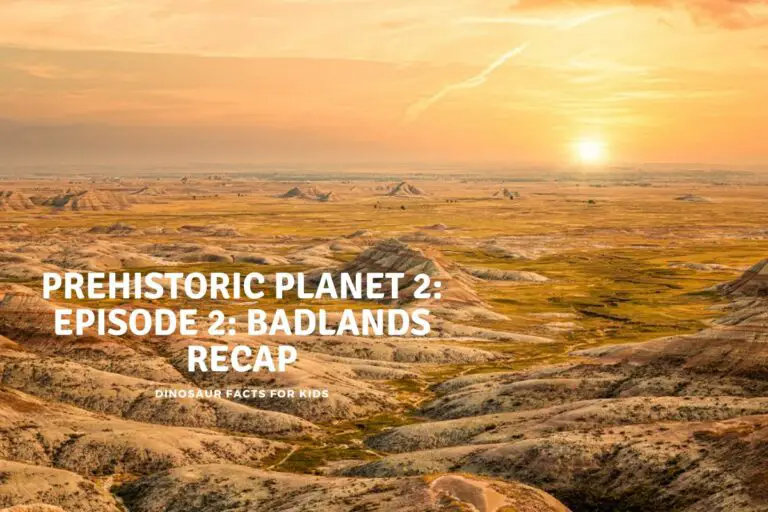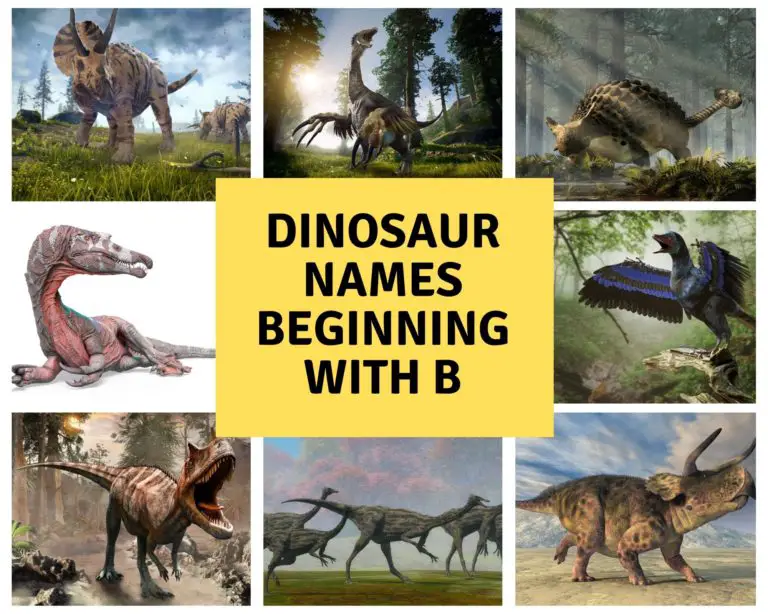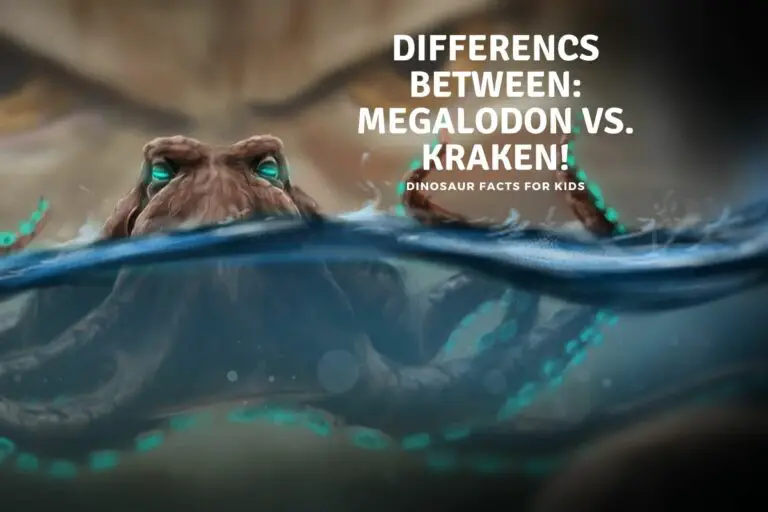What Killed Velociraptors?
When you watch films like those in the Jurassic Park franchise, you would believe that the velociraptor was perhaps quite the apex predator. These fast, cunning and deadly predators seemed to have no worthy enemies other than those the plot of the movie might have demanded for dramatic effect.
Velociraptors, despite being predators, would have been preyed upon by larger carnivorous dinosaurs like Tarbosaurus, Alioramus and even other velociraptors. However, disease, infection and natural disasters would also pose a threat. They would have become fully extinct soon after the K-T event 66 million years ago.
But was this the reality that velociraptors lived all those millions of years ago? The facts outside of the movie universe might surprise (or possibly disappoint) you. Read on to learn what other creatures were out there that indeed killed velociraptors in their time.

Size and Physique: The Reality of Velociraptors
The true size and physique of velociraptors have been greatly exaggerated in popular media. In reality, they were much smaller than depicted in films, standing at only about 1.5 feet tall at the hip and measuring 6 feet in length.
Their bodies were covered in feathers, making them resemble modern birds more than the scaly reptiles portrayed on-screen. Despite their small stature, velociraptors were agile and fast, capable of reaching speeds upwards of 24 mph.
Their size and feathered appearance allowed them to move quickly and stealthily, making them effective hunters. however, realizing they were not human sized clawed dinosaurs means they had a lot of dinosaurs larger than them and its important to realize that when suggesting what may have killed them.
What Killed Velociraptors?
Despite the view of velociraptors as large, cunning apex predators, they were actually hunted and eaten by a number of larger predators. One example was Alioramus, a member of the Tyrannosauridae family in which you find, yes, the T-rex.
Other likely predators included Tarbosaurus, and Troodontids. All these predators were larger, and came with large claws and teeth ready to challenge and kill velociraptor if and when the time came.
Dinosaurs who Preyed on Velociraptors?
Alioramus
Alioramus stood quite a lot larger than velociraptor at up to 20 feet in length, and standing at about the same height as a human male. If meeting a velociraptor one on one, the Alioramus would have every advantage in size and power, and even meeting a pack could likely the whole pack turn tail and flee.
Tarbosaurus
Tarbosaurus, whose Latin name interestingly translates to “alarming lizard”, was another potential predator for velociraptor. The only species known is the Tarbosaurus bataar, which as its name implies was native to what is now Mongolia — the modern capital of Mongolia is Ulaanbaatar, a slightly different spelling but clearly an influence on the naming.
This predator is the subject of some debate among scholars who consider it a Tyrannosaurus essentially the same species just a little smaller and Asian based. ( or what is now Asia anyway)
Troodontids
Troodontids of the Troodontidae clade were also fast-moving theropod carnivores according to most experts. However, the shape of their teeth has led some to speculate that they may have been omnivorous.
How likely it is that Troodontids would take on a velociraptor is a matter of pure speculation, of course, but given the size of their claws and the possibility of working in groups, they could have taken on a velociraptor they are also considered one of the smarter of the dinosaurs so may have had beet social groups and pack hunting abilities.
Other Velociraptors
Velociraptors are also believed to have been cannibalistic in that members of their own species would kill and eat others if there was need. It is also very likely that adult velociraptors targeted younger and more vulnerable members of another velociraptor pack as ‘easy pickings’ in a hunt.

Fighting Dinosaurs fossil
The “Fighting Dinosaurs” fossil is a unique and remarkable discovery that provides a rare glimpse into the predatory interactions that occurred millions of years ago during the late Cretaceous period.
Found in the Gobi Desert of Mongolia in the 1970s, it captures a Velociraptor and a Protoceratops frozen in the midst of combat. So it didnt always have to be a predator that got the better of a velociraptor!
The Velociraptor is known for its distinctive sickle-shaped foot claw, which it likely used to slash at and subdue its prey. In the fossil, this claw is embedded in the neck of the Protoceratops, a small, herbivorous dinosaur related to the more famous Triceratops. And there is even a back handed reference to it in Jurassic World Dominion when Alan grant says they used it to slash at the throat!
The Protoceratops, despite its smaller size, appears to have fought back, as its powerful beak-like mouth is clamped down on the Velociraptor’s arm.
Paleontologists believe that this intense battle was likely initiated by the Velociraptor as it attempted to prey upon the Protoceratops. However, as the struggle unfolded, both dinosaurs were suddenly engulfed by a collapsing sand dune or mudslide, which quickly buried and preserved them in their fighting positions.
So it shows that either the Protoceratops killed the velociraptor or, more likely, a mud or sand dune collapse did.

Other factors
While it is popular to look at dinosaurs as spending all their time hunting, killing and eating each other this is actually just a part of the natural order. there were plenty more factors that could kill not only velociraptors but many other dinosaur species when they occurred. We take a look at some below.
Environment and Natural Disasters:
Apart from predation and competition, velociraptors also faced various environmental challenges that could have led to their deaths. Climate changes, such as temperature changes and extreme weather events, could have had a profound impact on the availability of resources, forcing velociraptors to adapt or perish.
Additionally, natural disasters like volcanic eruptions or massive floods could have caused sudden and dramatic changes to their environment, resulting in the deaths of many velociraptors.
These external forces played a role in shaping the survival of not only velociraptors but also other dinosaur species that shared the same environment.
Disease and Parasites: Invisible Killers of Velociraptors
Disease and parasites are often overlooked when discussing dinosaur mortality but played a crucial role in the lives of these ancient creatures. Velociraptors, like all living organisms, were susceptible to infections and infestations that could have severely affected their health and well-being.
Bacterial, viral, and fungal diseases could have spread through populations, causing illness and death among velociraptors. Similarly, parasites like ticks, mites, or internal worms could have weakened their immune systems and diminished their ability to hunt and survive.
The prevalence of disease and parasites in the prehistoric world was another factor contributing to the death of velociraptors and in fact all species of dinosaur.

The Final Blow: The K-T Extinction Event and Velociraptors
The K-T Extinction Event, which occurred around 66 million years ago, marked the end of the Cretaceous period and likely played a significant role in the extinction of velociraptors, along with countless other dinosaur species.
This event, believed to have been triggered by a massive asteroid impact and/or extensive volcanic activity, led to widespread environmental upheaval, including fires, tsunamis, and a dramatic drop in global temperatures due to the release of dust and aerosols into the atmosphere.
These catastrophic changes in the environment would have had devastating effects on the food chain, causing the collapse of ecosystems and the eventual extinction of many species, including the velociraptors.
For us humans at least, it wasn’t all bad news, it allowed mammals to evolve to become the dominant lifeforms on the planet bring an end to not only velociraptors but to the age of the dinosaurs all together.
What Killed Velociraptors in the Movies?
The Jurassic World films have helped fuel continuous fascination with dinosaurs, especially velociraptors, which have played critical roles in all of the films since the first one was released in 1993. But once again, despite their fearsome appearance, they weren’t without enemies.
One could argue that the first predator against the raptors in the film series were humans, since they attempted to hunt them down and at least contain them, if not kill them.
Another key rival was the Tyrannosaurus rex, arriving in the nick of time to unwittingly save our heroes from the circling and snarling raptors near the end of the film.
The rebooted movies also showed velociraptors being hunted by the newly created Indominus rex, as well as Indoraptor. Both of these were hybrid species created by the character Dr. Henry Wu in the film franchise, one of the key individuals that made the entire project possible with his knowledge of cloning.
The former was developed to provide “more teeth” to the park’s list of attractions, and the latter as a potential weapon of war. The fact is that real-life velociraptors likely couldn’t have stood up to attacks from any of these beasts, the reasons for which we’ll explain in more detail below.
Was Velociraptor Really a Good Hunter?
The view of velociraptors as apex predators is very much a creation of Hollywood, though they were indeed capable hunters, and did feature a single, sickle-shaped claw on their feet that was especially good for bringing down the prey that they did hunt.
Far from just being capable of slashing, however, the large and powerful claws of the velociraptors are believed to have been used more like those of an eagle’s talons in the modern day.
They would have grabbed hold of prey, and then used their body weight to pin them down, and then likely started eating their prey while they were still alive.
The name “velociraptor” does translate into “quick thief”, which also points to the belief that these raptors might well have scavenged and stolen their food.
They are appropriately named, however, as even though a single individual was small, it could still run at speeds upwards of 24-mph, and also potentially worked in packs with other raptors. In all these senses, velociraptor was indeed an incredibly capable hunter.
What’s important to remember, however, is that the creature was smaller than most imagine based on the Hollywood image, and was far more bird-like than lizard-like as shown in the films. Despite its size and the presence of larger predators, velociraptor likely still cut a fearsome figure in its native environment, what is now Mongolia and the Gobi Desert.
It’s unlikely any dinosaur, hungry or otherwise, relished running into a pack of these accomplished killers, unless it happened to be the size of a Tarbosaurus of course.
Conclusion
The main cause of the death of the velociraptors and the event that likely killed most of them soon after was the K-T extinction event 66 million years ago. Even though currently Velociraptor fossils are dated to around 70 million years ago it is within an margin or error to suggest they were alive around this time, and would not have survived the aftermath.
however, while they lived it was not all plan sailing, and while they were certainly well equipped and formidable hunters their size would have put them on the menu for many of the larger or smarter predators that lived at the time like Tarbosaurus. Troodons and Alioramus.
So while velociraptor was an accomplished carnivore it had to keep one eye out for prey and the other for predators.
References
- https://www.quora.com/What-happened-to-the-velociraptors-from-Jurassic-Park-3-Where-are-the-raptors-from-JP3-in-Jurassic-world
- https://www.dailymail.co.uk/sciencetech/article-5660601/Flesh-eating-dinosaur-Velociraptor-killed-prey-powerful-bite-not-razor-sharp-claws.html
- https://en.wikipedia.org/wiki/Fighting_Dinosaurs#:~:text=The%20Fighting%20Dinosaurs%20is%20a,behavior%20in%20non%2Davian%20dinosaurs.
- https://www.newscientist.com/article/mg22530090-800-stunning-fossils-dinosaur-death-match/
- https://www.amnh.org/exhibitions/fighting-dinos/the-fighting-dinosaurs
Hi, I am Roy Ford a General Studies and English Teacher who has taught all over the world. What started as a fossil collection became a great way to teach, motivate and inspire students of all ages and all over the world about dinosaurs and from that and children’s love of dinosaurs came the site dinosaur facts for kids, a resource for all ages.







